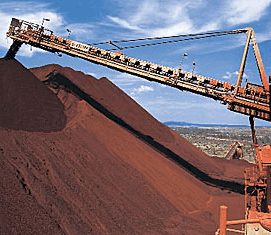
A note from Goldman Sachs today supports my bearish view on iron ore. GS sees a surplus of 80 million tonnes this year and cheaper Chinese supply than markets reckon, which will push the producer shakeout further and deeper:
China: Growth moves inland and underground
We investigate two sources of iron ore supply that are often overlooked and see further risks that production may surprise on the upside as the market heads towards a period of lower prices. Regarding Chinese iron ore production, investors and analysts often focus on Hebei province as the leading producer with a 39% market share of domestic supply. However, high prices and slowing supply growth in Hebei must be set against inland provinces where prices are on average 21% below the Tangshan index and production is growing at double digits. We focus on two structural trends currently under way that are material to the outlook for future Chinese production. First, the Chinese iron ore sector is increasingly mechanized and labour productivity is up 100% since 2000. Second, underground mining is often overlooked because it accounts for just 3% of ex-China production, but it is increasingly common in China where it accounts for approximately 55% of Chinese domestic supply. Underground mines are often associated with higher operating costs, but our analysis suggests that they can be competitive in the long term under the right conditions; we provide an overview of mining methods and production costs.EM6: Ranked 2nd behind Australia in 2013 supply growth
Regarding seaborne supply, most discussions tend to focus on the established producers such as Australia and Brazil. We analyse instead six emerging suppliers (Chile, Indonesia, Iran, Malaysia, Mexico and Peru – the EM6) that account for barely 2% of seaborne supply on an individual basis. However, EM6 exports increased 30% yoy on an aggregate basis to reach 82Mt in 2013, ranking as the largest source of seaborne supply growth after Australia. In our view, EM6 supply in 2014 and beyond will stabilize as a result of potential declines in Indonesian exports offset by expansions in the rest of the EM6.We expect the iron ore market to move into surplus in 2014
After years of tightness, we believe supply growth will exceed demand growth in 2014. We estimate that up to 80Mt of production capacity may be redundant this year, leading to the closure of marginal mines in China and other regions. We maintain our bearish price forecasts of US$108/80/t in 2014/15, respectively.
These prices roughly equate to my own forecasts.

